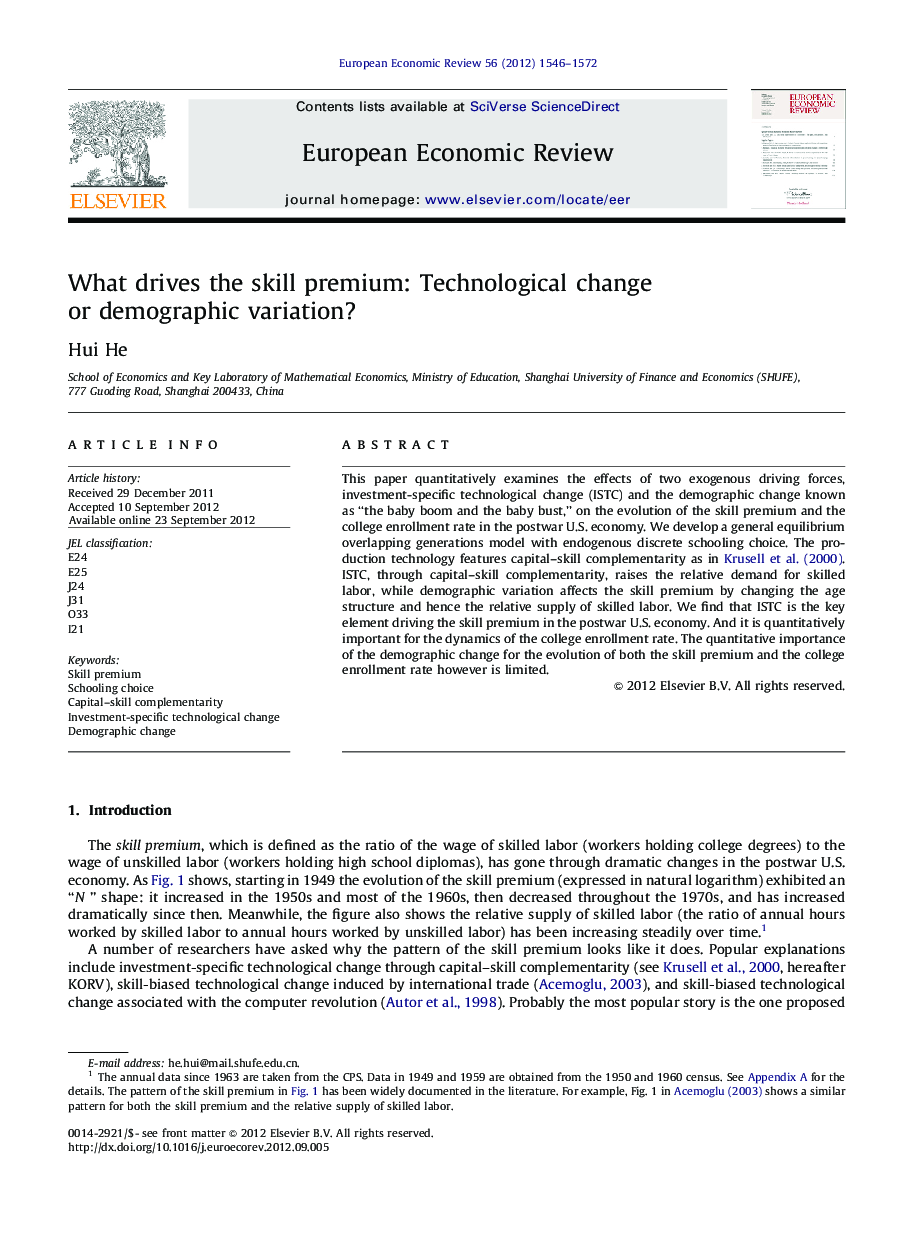| کد مقاله | کد نشریه | سال انتشار | مقاله انگلیسی | نسخه تمام متن |
|---|---|---|---|---|
| 5066974 | 1372560 | 2012 | 27 صفحه PDF | دانلود رایگان |

This paper quantitatively examines the effects of two exogenous driving forces, investment-specific technological change (ISTC) and the demographic change known as “the baby boom and the baby bust,” on the evolution of the skill premium and the college enrollment rate in the postwar U.S. economy. We develop a general equilibrium overlapping generations model with endogenous discrete schooling choice. The production technology features capital-skill complementarity as in Krusell et al. (2000). ISTC, through capital-skill complementarity, raises the relative demand for skilled labor, while demographic variation affects the skill premium by changing the age structure and hence the relative supply of skilled labor. We find that ISTC is the key element driving the skill premium in the postwar U.S. economy. And it is quantitatively important for the dynamics of the college enrollment rate. The quantitative importance of the demographic change for the evolution of both the skill premium and the college enrollment rate however is limited.
⺠Examine effects of ISTC and demographic change on skill premium (SP). ⺠General equilibrium OLG model with endogenous college entry decision. ⺠The production technology features capital-skill complementarity. ⺠ISTC is the key element driving the SP and college enrollment rate. ⺠Quantitative importance of demographic change on both SP and college enrollment rate is limited.
Journal: European Economic Review - Volume 56, Issue 8, November 2012, Pages 1546-1572